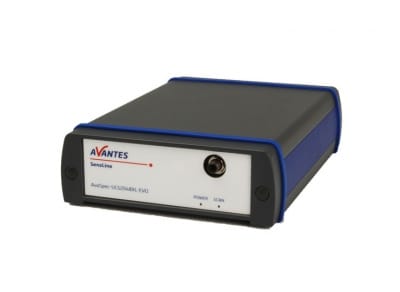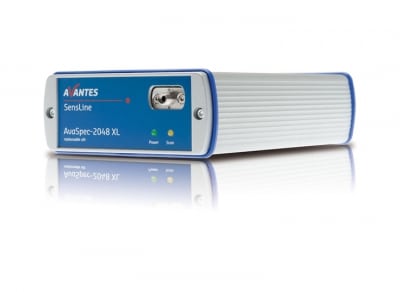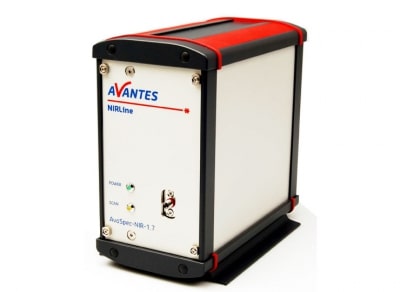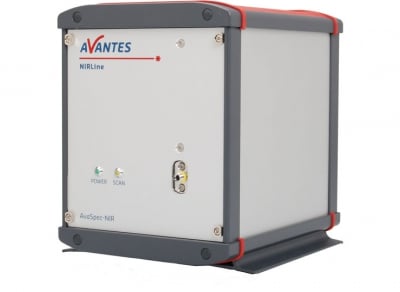Measurements in the electromagnetic spectrum between 700 and 2500 nm are considered near-infrared spectroscopy, but this method most often refers to measurements of NIR reflectance and absorbance. Light in the near-infrared range is able to penetrate further into many materials than other wavelengths, making this technique especially valuable in biomedical applications.
The spectral bands revealed in NIR spectroscopy are typically broad and complex, making it difficult to distinguish the effects of individual elements. Use of multivariate analysis and the development of reference calibration data are essential in NIR spectroscopy.
Measurements in the near-infrared between 900 and 2500 nm require special considerations and the Avantes NIRLine is the answer. The NIRLine offers both cooled and uncooled instruments with user selectable dual gain mode for the choice to emphasize High-Sensitivity or Low Noise operations.
The cooled instruments in the NIRLine feature thermoelectric Peltier-cooled InGaAs detectors capable of cooling the detector to -25°C compared to ambient enhancing the signal to noise ratio and allowing for longer integration times.
The NIRLine is fully compatible with other instruments in the Avantes family with several premium options to consider including Irradiance/Intensity calibration or nonlinearity calibration.
Biomedical Applications for NIR Spectroscopy
There are several wavelengths of particular value to the Biomedical community, particularly the range from roughly 650 to 1350 nm called the Near-infrared diagnostic window. This range of wavelengths penetrates more deeply into living tissue than any other wavelength and without any damage or danger to the subject. Because of this characteristic, NIR measurements are widely used in biomedical applications. Co-oximetry and blood gas analysis provide important information to medical personnel about the oxygenation levels of the blood by measuring hemoglobin that is bonded to an oxygen molecule against those that are not. Other important biomedical parameters in NIR spectroscopy are water and fat, both sources of attenuation. Furthermore different parts of the body have different concentrations of water, hemoglobin, melanin and other constituents requiring the development of multi-reference data. For example, the absorption spectrum for arteries and veins are different, therefore the development of reference calibration for breast tissue requires plotting an average distribution of veins and arteries in the sample.
Other Applications for NIR Spectroscopy
Besides biomedical applications, near-infrared spectroscopy is employed in dozens of everyday uses. In agriculture, NIR spectroscopy is used to estimate the chlorophyll content which has a direct correlation to nitrogen in the soil. This allows farmers to use less nitrogen-based fertilizer and only where and when it is needed, saving production costs and protecting the environment. NIR spectroscopy is also used to monitor plant health, particularly grain crops, for diseases that cut yield or produce harmful toxins. You can also find NIR spectroscopy in the grading and sorting of fruits and vegetables. NIR spectroscopy is also hard at work in astronomy, remote sensing and materials science.
 My Cart
My Cart 



